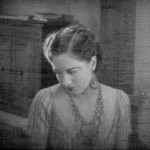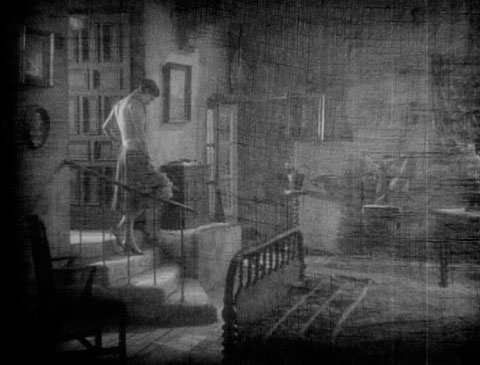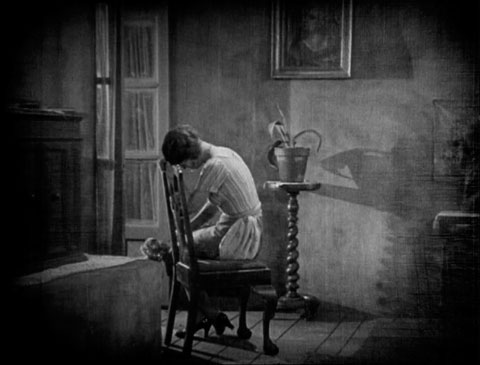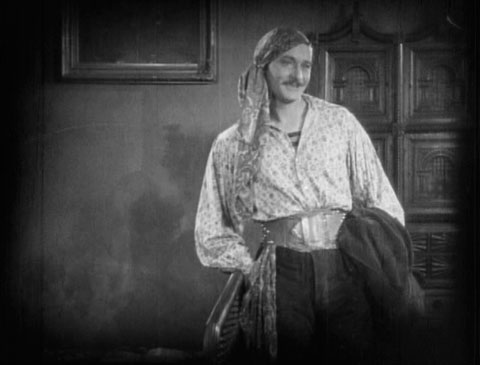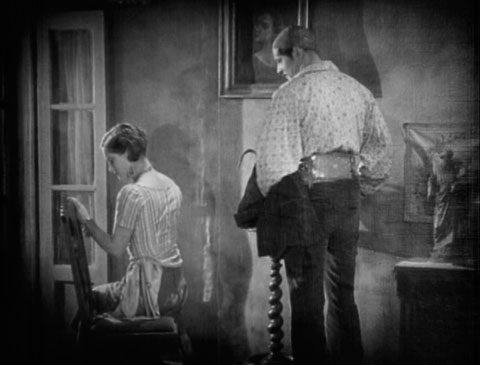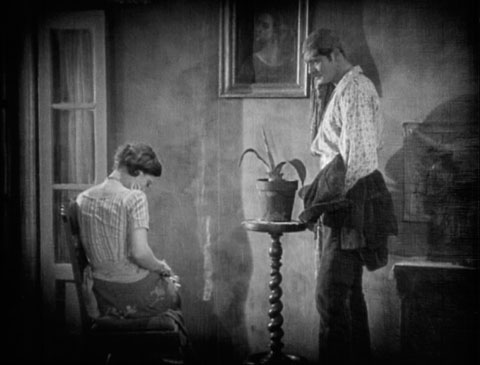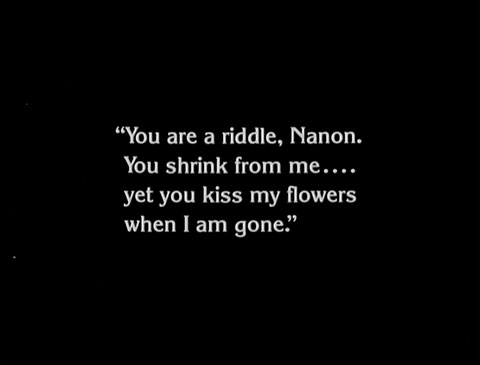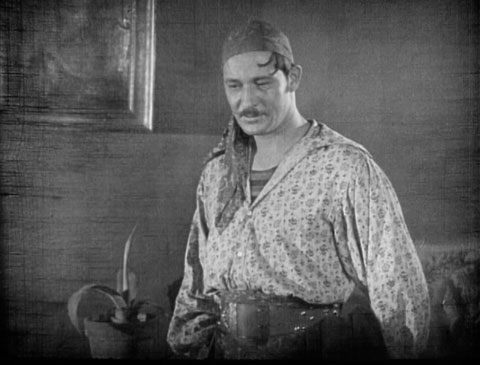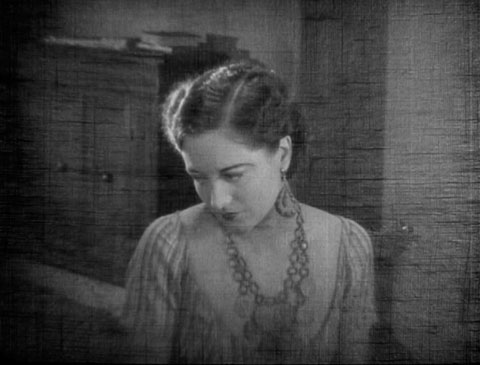Dir. Tod Browning
The San Francisco Silent Film Festival‘s opening night screening of Harold Lloyd’s The Kid Brother (Wilde, 1927) was preceded by Broncho Billy’s Adventure (Anderson, 1911), a short Western about a gun-toting barkeep, his teenaged daughter, and the man she loves. Midway through the film, we see the young woman weeping over her lover, who is bedridden after being shot outside of the saloon. In the style typical of shorts from the 1910s, the actress’s performance is all wild-eyed, teeth-gnashing, and chest-thumping. It was too much for the San Francisco audience, who hooted and laughed throughout the scene. Behind me, I heard a confused four-year-old ask her mother the same question I was asking myself: “Why is this silly?”
Twenty-four hours later, Guy Maddin introduced Tod Browning’s The Unknown with a succinct defense of melodrama:
At night, when we sleep, in our dreams we are liberated. Our selves, our story selves, are liberated. Our ids are loosed upon our little dreamscapes and — if we’re lucky — we get to grab the person we lust after; we get to hit the person we hate; we get to wail and scream and moan all we want without anyone scolding us. And, also, we’re given access: little repressed fears and anxieties grow into monstrous terrors in our dreams and our true selves become so uninhibited. I use the word “uninhibited” pointedly because melodrama is always aligned as something sort of grotesque or a tasteless exaggeration of real life. If that’s all melodrama were, it would deserve that slag; but, I think a melodrama isn’t a true life exaggerated — that would be bogus — it’s true life uninhibited, just like our dreams.
It was a perfect prologue to The Unknown, a collaboration between Browning and Lon Chaney that exists almost completely in uninhibited, symbolic space. Chaney plays Alonzo, an armless knife-thrower in a traveling carnival show, whose love for Nanon (a very young and incredibly sexy Joan Crawford) threatens to expose his carefully guarded secrets. Alonzo’s deformity is given a funhouse mirror reflection in the person of Malabar the Mighty (Norman Kerry), whose desire to hold Nanon in his arms repulses her. The specter of sexual abuse (at the hands of her father?) seeps into every corner of this film, which is overrun by tragedy, dread, heartache, and transgression.
Or, at least, that was my experience of The Unknown on a second viewing — this time alone in my home with the soundtrack muted. (The film is available on disc 2 of TCM’s Lon Chaney Collection.) Despite his opening testament to the artistry of melodrama, Guy Maddin turned the San Francisco screening into a bit of a camp fest. The beautiful print we saw was on loan from the Cinematheque Francaise and had French intertitles, which Maddin then “untranslated” by reading aloud from the original American release. If you’re familiar with Maddin’s films or have heard him speak in other contexts, then you can surely imagine the effect of hearing him deliver lines like, “You are a riddle, Nanon. You shrink from me . . . yet you kiss my flowers when I am gone.” The sold out house never stopped laughing, it was so silly.
Except the film isn’t silly at all. (And I’m sure Maddin would agree). Watching it alone, in silence, I was struck by images like this:
Melodrama is a matter of narrative and performance style, of course, but, particularly in silent cinema, the core of melodrama is mise-en-scene. The exaggerated emotion in this shot is not generated by plot intrigues but by the deep focus photography (that open balcony in the background), the clash of patterns in the set decoration and costumes (the checkered tablecloth, striped blouse, and ornate headscarf), and most importantly the staging of the two actors — Chaney’s intimate smile, Crawford’s stiff shoulders and the curve of her neck, and the unnatural light that illuminates Nanon’s body.
Nanon’s Redemption
The turning point of The Unknown comes when Alonzo flees the carnival to have a ghastly operation, which, unfortunately for him, allows time for Nanon and Malabar to become better acquainted. After Alonzo decides to leave, Browning cuts to the following shot of Nanon, with Malabar’s flowers in hand, descending a flight of stairs. The strange, textured camera effect Browning uses here heightens the unreality of the scene, as if we’ve entered Alonzo’s subjectivity. Notice, again, the curve of Crawford’s neck. Browning has a bit of a fetish, I think. Notice, also, the empty bed in the foreground.
The first three shots are a standard progression: extreme long, long, medium. Then Nanon slowly turns, and on an eyeline match we enter a perspective just outside of her point of view. Malabar the Mighty has returned. (Is it just me or does Norman Kerry look exactly like Kevin Kline here?)
And then the close-up, with tears poised to drop. Just a ridiculously beautiful image.
Finally, Nanon’s redemption. So much emotion packed into a single, simple movement.
Nope. It’s not silly at all.
